May 23, 2025 | 20:44 GMT +7
May 23, 2025 | 20:44 GMT +7
Hotline: 0913.378.918
May 23, 2025 | 20:44 GMT +7
Hotline: 0913.378.918
Looking back at Vietnam's tuna industry 10 years ago, Ms. Cao Thi Kim Lan, Director of Binh Dinh Fishery Joint Stock Company (Bidifisco), shared that, at that time, Vietnam ranked 8th on the map ranking tuna exporting countries in the world, with few small processing businesses. Although the processing capacity was not large, because the source of tuna exploited by the domestic fleet was not enough for processing and export needs, businesses had to import more raw tuna from foreign countries.
At that time, to import raw tuna, Vietnamese tuna businesses had to buy through many foreign intermediary companies, causing prices and raw material costs to increase highly.

Tuna is about to be brought ashore at a fishing port in Phu Yen. Photo: Son Trang.
In that context, Vietnam's tuna industry still continued to develop, gradually forming tuna processing factories with high-tech machinery and equipment, experience, and sales skills, thereby bringing Vietnamese products to many markets around the world and creating a foothold in the market. Thanks to that, by 2022, for the first time, Vietnam's tuna exports would have exceeded the mark of USD 1 billion.
In 2023, amid the general difficulties of the global seafood market, tuna exports declined, with a decrease of 17%, reaching USD 845 million, thus losing the mark of USD 1 billion. However, Vietnam has become the world's 5th largest tuna exporting country in terms of turnover, only behind Thailand, Ecuador, Spain, and China.
According to Ms. Kim Lan, up until now, Vietnam has established a "billion-dollar" tuna industry, ranking among the top in the world. Tuna businesses have developed in both scale and technology and are brave enough to dominate the global market, especially the raw material supply market, a decisive factor in the development of the industry.
Vietnamese tuna businesses have moved to directly purchase raw tuna from fishing vessels from other countries in international waters. Thanks to that, in importing raw tuna, Vietnam's tuna industry has now skipped the intermediary stage and shortened the supply chain, thereby significantly reducing the cost of input raw materials. This is a decisive factor in the global competitiveness that the tuna industry of many countries currently cannot do as similarly as Vietnam.
Specifically, every year Vietnam welcomes an average of over 20 foreign fishing and freezing vessels with hundreds of thousands of tons of raw tuna that come to sell directly to Vietnamese tuna businesses. The raw tuna supply chain in Southeast Asia is shifting to Vietnam instead of just Thailand as before.
Vietnam is currently the preferred destination of global raw tuna suppliers because the tuna industry has a large production capacity, superior technology, and, above all, a flexible and open raw material import policy with tariff incentives and favorable import procedures in specialized management, etc., thereby creating prestige with major suppliers.
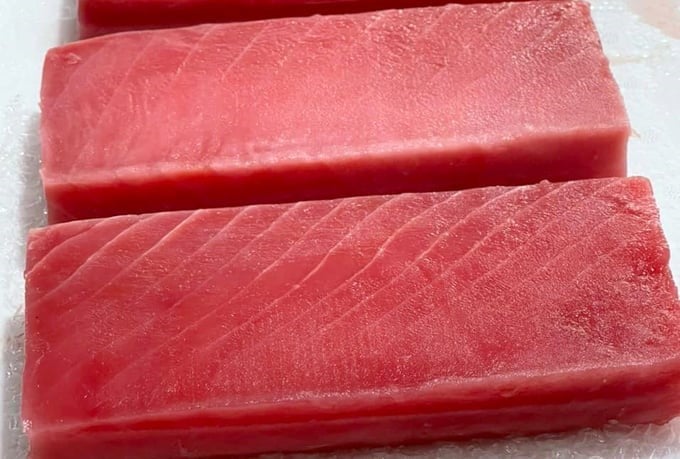
Frozen tuna loin. Photo: Son Trang.
After a decline in 2023, tuna exports have recovered and are growing strongly this year. According to the Vietnam Association of Seafood Exporters and Producers (VASEP), by the end of May 2024, tuna exports had reached USD 388 million, an increase of 22% over the same period in 2023. Vietnamese tuna businesses expect that in 2024, Vietnamese tuna will have the opportunity to return to the mark of USD 1 billion.
However, to return to the mark of USD 1 billion, shortcomings related to raw tuna need to be considered and promptly resolved. There are currently three problems related to raw tuna, including getting a certificate of exploited seafood raw materials that is difficult; the regulation on minimum size for skipjack tuna exploitation that is not practical; and some new regulations and requirements related to the import of raw seafood for processing and export to the EU and the import of raw seafood by container.
In the structure of Vietnam's tuna export value in recent years, more than 50% of the value is created from imported raw materials because domestically exploited tuna does not meet the demand for export processing.
To overcome difficulties and challenges and bring tuna back to the list of billion-dollar export products, one of the important solutions is to make the most of the free trade agreements (FTA) signed with the EU, UK
Translated by Thu Huyen
/2025/05/22/5250-1-184853_288.jpg)
(VAN) According to a representative from the Central Retail Vietnam, Vietnamese products such as seafood, sweet potatoes, dragon fruit, coffee, and spices hold great potential in the Thai market.

(VAN) A multi-channel, multi-directional strategy only works when the agricultural value chain meets global transparency and SPS standards.
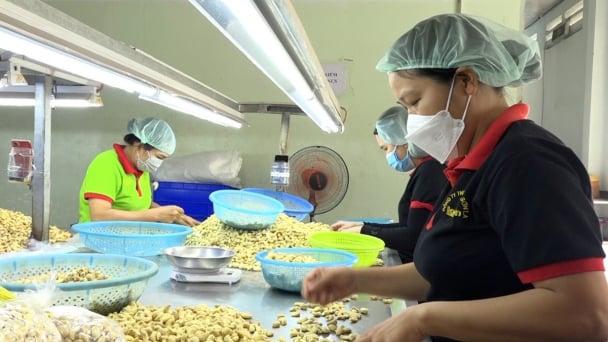
(VAN) Market expansion is a matter of survival for Vietnamese businesses amid fierce competition and global supply chain fluctuations.

(VAN) Global market prospects for U.S. long-grain rice for the upcoming marketing year.
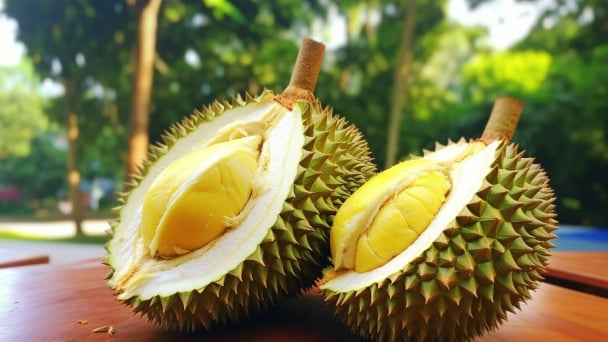
(VAN) China’s General Administration of Customs started permitting fresh durian shipments from Cambodia after a phytosanitary protocol was signed with the Cambodian Ministry of Agriculture in late April.
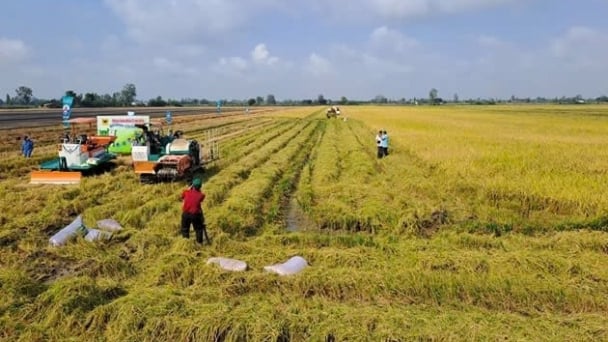
(VAN) To operate carbon market, one of the key issues is determining which types of 'commodities' meet the standards to be traded on the market.
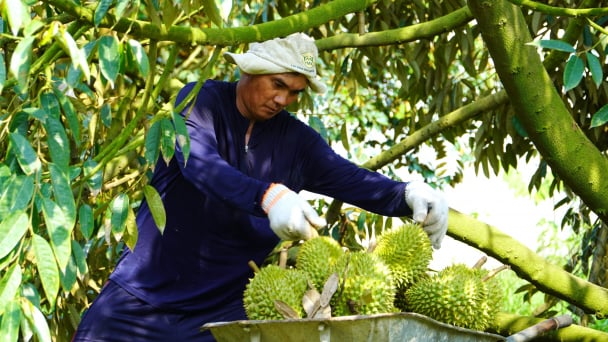
(VAN) Durian-producing localities need to coordinate more effectively with central authorities to improve the traceability, monitoring, and response systems in case of violations.